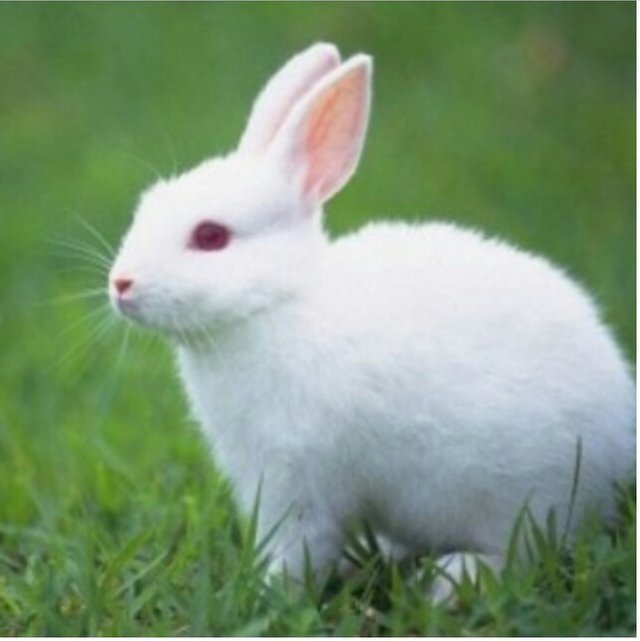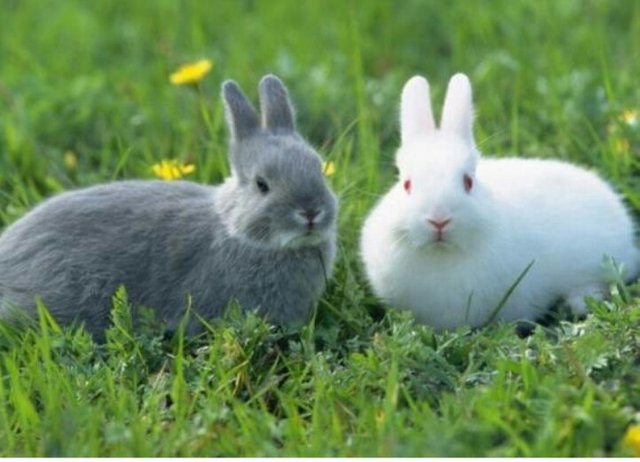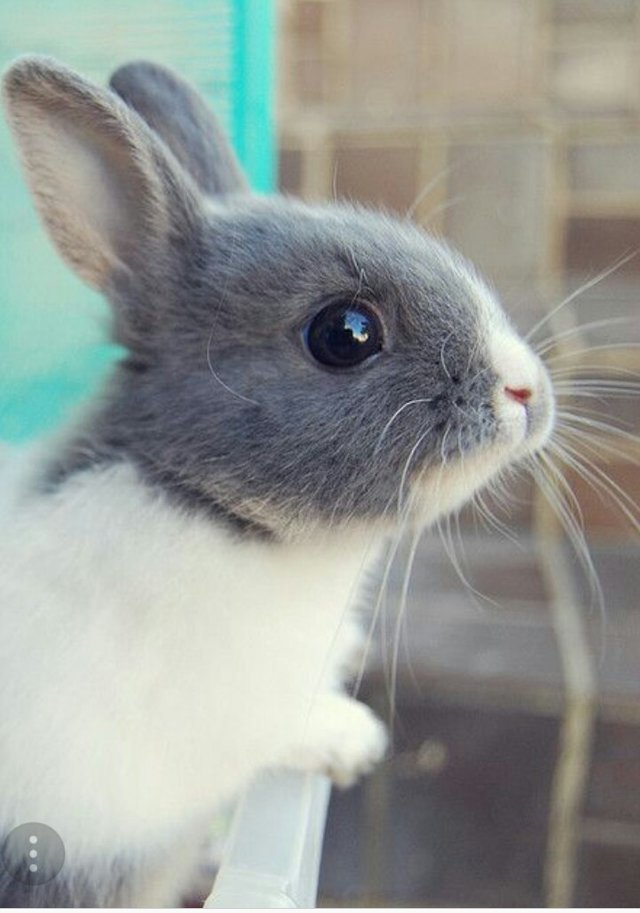The Rabbit

Rabbits: Habits, Diet and Other Facts
Rabbits are little well evolved creatures with soft, short tails, hairs and unmistakable long ears. There are more than 30 species around the globe, and keeping in mind that they live in various situations, they have numerous things in like manner.
Measure
A few rabbits are about the measure of a feline, and some can develop to be as large as a little youngster. Little rabbits, for example, dwarf rabbits, can be as meager as 8 inches (20 centimeters) long and weigh not as much as a pound. Bigger species develop to 20 inches (50 cm) and more than 10 lbs. (4.5 kilograms).
As indicated by Dr. Lianne McLeod, a veterinarian, in a segment for The Spruce site, the largest rabbit breeds are the checkered goliath, more than 11 lbs. (5 kg); Flemish goliath, 13 lbs. (5.9 kg) and over; monster papillon, 13 to 14 lbs. 5.9 to 6.3 kg); and mammoth chinchilla, 12 to 16 lbs. (5.4 to 7.2 kg). The world's longest rabbit, as indicated by Guinness World Records, is a Flemish monster that checked in at 4 feet 3 inches (129 cm) and 49 pounds (22 kg).
Little rabbit breeds incorporate the Britannia Petite, under 2.5 lbs. (1.1 kg); Netherland predominate, under 2.5 lbs.; overshadow hotot, under 3 lbs. (1.3 kg); and Himalayan, 2.5 to 4.5 lbs. (1.1 to 2 kg).
Posterity

Rabbits are known for their insatiable regenerative habits for justifiable reason. They breed three to four times every year. This is on the grounds that lone 15 percent of infant rabbits influence it to their first birthday celebration, as indicated by the Animal Diversity To web (ADW). Thus, to guarantee that the populace develops, rabbits have more infants.
Every pregnancy produces three to eight children, called cats or packs. ("Bunny" is only a tender name for a rabbit, youthful or grown-up, agreeing to Small Pet Select.) After four to five weeks, a pack can administer to itself. In a few months it is prepared to begin its very own group. On the off chance that there is an absence of characteristic predators, a zone can rapidly progress toward becoming overwhelm with rabbits.
Eating regimen
Rabbits are herbivores. This implies they have a plant-based eating routine and don't eat meat. Their eating regimens incorporate grasses, clover and some cruciferous plants, for example, broccoli and Brussels grows. They are sharp feeders and furthermore eat natural products, seeds, roots, buds, and tree husk, as indicated by ADW.
Living space
While initially from Europe and Africa, rabbits are currently discovered everywhere throughout the world. They possess a large portion of the world's territory masses, with the exception of southern South America, the West Indies, Madagascar, and most islands southeast of Asia, as indicated by ADW. Albeit initially missing from South America, Australia, New Zealand, Java, rabbits have been acquainted with these areas amid the most recent couple of hundreds of years.
Residential rabbits require a directed situation to secure against warm depletion or hypothermia. Wild rabbits don't have this issue and make their homes in different temperature extremes. Wild rabbits can be found in woods, timberlands, glades, fields, deserts, tundra and wetlands.
Wild rabbits make their own homes by burrowing into the ground. These passage frameworks are called warrens and incorporate spaces for settling and dozing. They likewise have different passages for speedy escape. Warrens can be as profound as 9.84 feet (3 meters) underground, as indicated by the Young People's Trust for the Environment.
Propensities
Rabbits are exceptionally social animals and live in vast gatherings called provinces. The busiest time of day for rabbits is at nightfall and first light. This is the point at which they wander out to discover nourishment. The low light enables them to escape predators.
Predators — which incorporate owls, birds of prey, hawks, birds of prey, wild canines, non domesticated felines and ground squirrels — are a steady danger. The rabbit's long legs and capacity to keep running for long stretches at high speeds are likely developmental adjustments to enable them to escape things that need to eat them.
Protection status
The domestic or European rabbit is considered inside close debilitated range by the IUCN. Discovered everywhere throughout the world, researchers think most populaces are relatives of residential rabbits that were discharged in nature. It is local to the Iberian Peninsula, and here, populaces have declined as much as 95 percent from its 1950 numbers, and around 80 percent of its 1975 numbers. The decay is credited to environment misfortune, illness and chasing. Rabbits are thought about vermin by numerous nursery workers.

Bunolagus monticularis, the riverine rabbit of South Africa, is basically imperiled. Of 10 subpopulations, none is assessed to have more than 50 people, as per the IUCN's Red List of Threatened Species. Loss of living space is the fundamental danger.
Nesolagus netscheri, the Sumatran striped rabbit, is recorded as defenseless. It is an uncommon animal groups, as indicated by IUCN, and not outstanding locally. The species lives just on the island of Sumatra, Indonesia, at elevations in the vicinity of 600 and 1,600 m (1,969 and 5,249 feet).
Pentalagus furnessi (Amami rabbit), which is discovered just on two Japanese islands, is imperiled, as per the IUCN. Populaces are declining a result of intrusive predators and natural surroundings misfortune caused by backwoods clearing and resort development. There are just around 5,000 people alive on Amami Island and 400 on Tokuno Island.
Romerolagus diazi (Volcano rabbit) is recorded as jeopardized. It is discovered just in Mexico close to the volcanoes Popocatepetl, Iztaccihuatl, El Pelado and Tlaloc. A recent report found in the vicinity of 2,478 and 12,120 people, however the populace drift is expanding.
A few types of cottontail rabbits (genus Silvilagus) are recorded as close undermined, debilitated, helpless, jeopardized and basically imperiled. The San José brush rabbit (Silvilagus mansuetus) is discovered just on San José Island in the Gulf of California. The one populace possesses a region of around 20 square kilometers (7.7 square miles). Less people were seen in 2008 contrasted with considers in 1995 and 1996, in spite of the fact that amounts were recorded.
Different certainties
Rabbits can be extremely sly and brisk. To make tracks in an opposite direction from a predator, a cottontail rabbit will keep running in a crisscross example and achieve velocities of up to 18 mph (29 km/h), concurring to National Geographic.
Their ears can develop to 4 inches (10 cm). This extended length enables them to better hear predators that might approach. It likewise permits them to stay cool in hot atmospheres. Additional body warm is discharged through veins in the ear.
Their eyes are made for wellbeing, as well, since each eye can pivot 360 degrees. This enables them to look behind them without stopping people in their tracks.
Rabbits don't get a great deal of sustenance from their eating routine. They regularly eat their own waste to get to any outstanding food that their stomach related framework may have missed the first run through.
beautiful
Congratulations! This post has been upvoted from the communal account, @minnowsupport, by Robel12 from the Minnow Support Project. It's a witness project run by aggroed, ausbitbank, teamsteem, theprophet0, someguy123, neoxian, followbtcnews, and netuoso. The goal is to help Steemit grow by supporting Minnows. Please find us at the Peace, Abundance, and Liberty Network (PALnet) Discord Channel. It's a completely public and open space to all members of the Steemit community who voluntarily choose to be there.
If you would like to delegate to the Minnow Support Project you can do so by clicking on the following links: 50SP, 100SP, 250SP, 500SP, 1000SP, 5000SP.
Be sure to leave at least 50SP undelegated on your account.